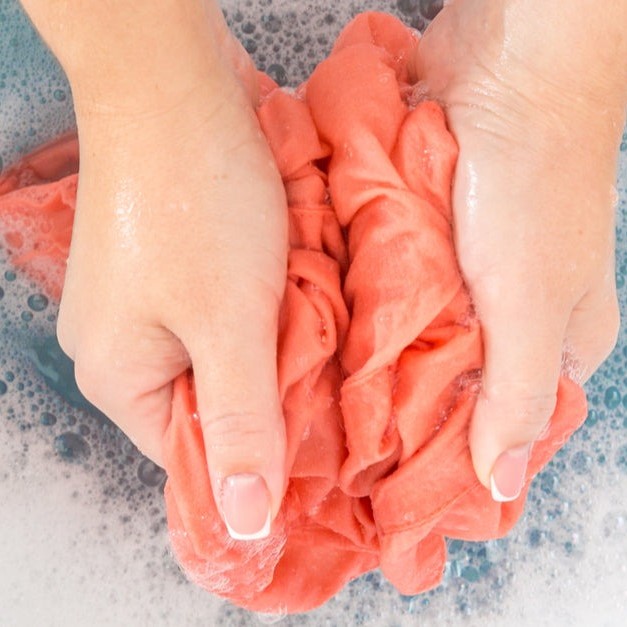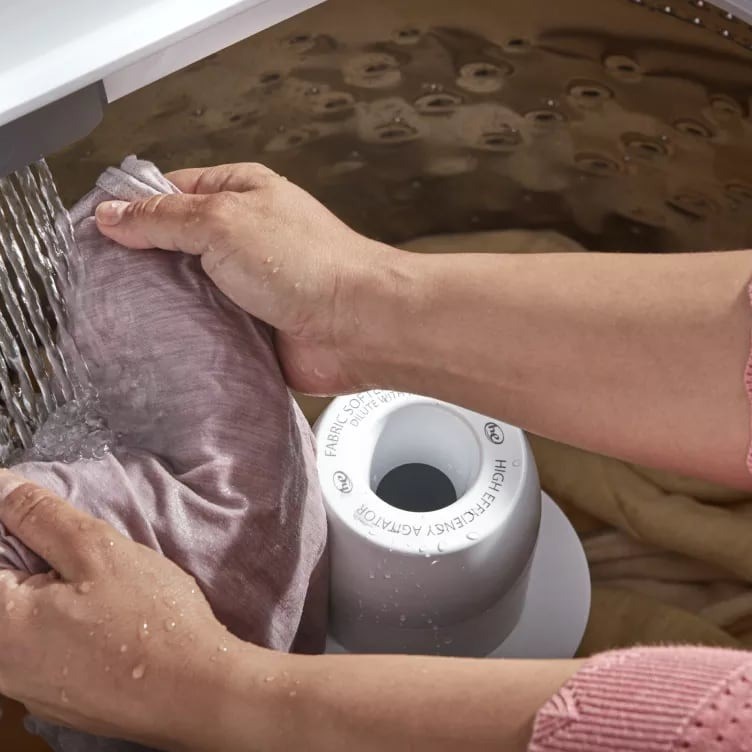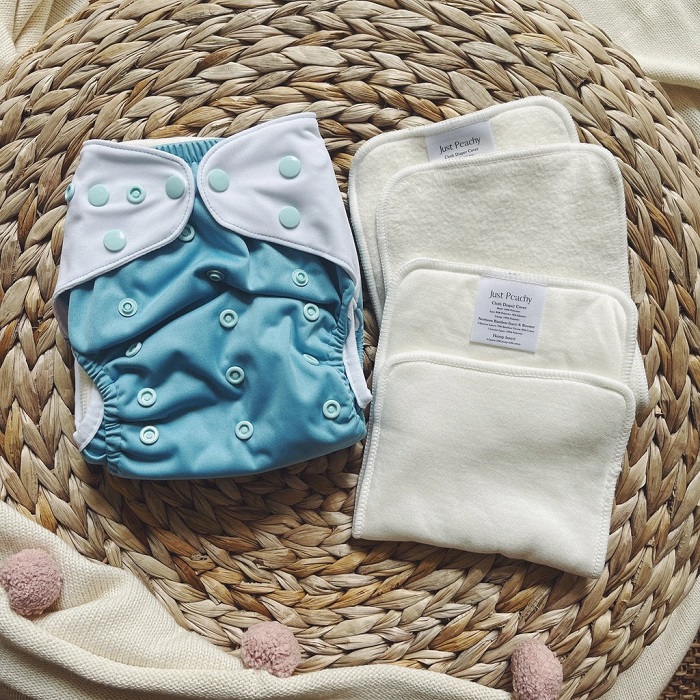Physical Address
304 North Cardinal St.
Dorchester Center, MA 02124
Physical Address
304 North Cardinal St.
Dorchester Center, MA 02124

Choosing to use cloth diapers is a smart and eco-friendly decision. With the right knowledge, cleaning cloth diapers can be easy. In this guide, we’ll walk you through the essentials of cloth diaper care. From pre-wash tips to addressing hard water issues, we’ve got you covered. Let’s dive into the basics of how to clean cloth diapers and keep them fresh for your baby’s use.
Preparing cloth diapers for washing is key. Here are simple, crucial steps to follow before the main wash:
Place soiled diapers in a designated container. Wet bags or diaper pails are ideal. They should have good airflow to prevent odor buildup. Consider using a deodorizing disc or drops of essential oil to keep smells at bay.
Dispose of solid waste in the toilet. For breastfed babies, poop is water-soluble, making it easier to wash. For formula-fed babies or those who eat solids, remove as much as possible. Use a diaper sprayer or flushable liners if available. This step is important to prevent stains and maintain diaper integrity.
Rinse diapers in cold water before the main wash. This helps to remove urine and feces left on the diapers. A pre-rinse can also reduce the risk of stains setting in fabrics. It’s an effective way to start the cleaning process.
Always look at the care instructions specific to your diaper brand. Following these guidelines ensures warranty validity and optimal diaper conditions. They will provide the best advice for pre-washing their product.
By following these pre-wash tips, you can enhance the effectiveness of the cleaning process and prolong the life of your cloth diapers.
To keep your cloth diapers clean and in good shape, follow this simple routine.
Begin with a cold water rinse to remove urine and loose stool. This prepares diapers for a deeper clean.
Next, run a long wash cycle using warm water. Add the proper amount of cloth diaper-friendly detergent. This step targets residual waste and odors.
If needed, do extra rinses to remove all traces of detergent, especially for those with soft water.
After washing, inspect diapers. They should be free of stains, smells, and residue. If issues persist, run another rinse or consider a different detergent.
Adhering to this process ensures that your cloth diapers come out clean, reducing wear and preserving their absorbency. It’s that easy—just rinse, wash, and check. If you encounter any problems, a few troubleshooting steps can help maintain your diapers’ cleanliness and effectiveness for the long haul.

Dealing with stains on cloth diapers is common, but don’t worry. With the right approach, you can keep your diapers looking great. Here are simple strategies to remove tough stains:
Lay cloth diapers in direct sunlight. Natural UV rays help break down and fade stains. Use this method after washing for the best results.
Apply lemon juice to stains before sunning. The citrus acid helps lift stubborn spots. Use sparingly; it’s a powerful stain fighter.
Mix baking soda with water to form a paste. Rub onto the stained area gently, then wash as usual. This can brighten fabrics and reduce odors.
Add a small cup of white vinegar to the rinse cycle. It tackles residue and can help with mineral buildup.
Oxygen bleach can be safe for cloth diapers in moderation. Use it for deep-set stains, but follow manufacturer guidelines closely.
Use disposable or fleece liners to catch solids. This can prevent stains from setting in the first place.
By using these simple strategies, you can ensure that your cloth diapers remain clean and fresh. Remember, always consult your diaper’s care instructions before trying any new cleaning method.
When you’re cleaning cloth diapers in hard water, your routine needs a bit of tweaking. Hard water contains minerals like calcium and magnesium that can hitch a ride on your fabrics. This mineral build-up can interfere with the absorbency of your diapers and even trap odors. Here’s what you can do to combat hard water woes when washing your cloth diapers:
Adding a water softener to your wash is critical. It counteracts the hard water minerals, preventing them from adhering to the diapers. Look for brands specifically designed for use with laundry and follow the recommended amount per load based on your water’s hardness level.
Choose a detergent tailored for cloth diapers and hard water use. These detergents are formulated with more surfactants that can help lift and wash away mineral deposits without leaving residue behind. Using the right amount is key; use too little, and your diapers might not get clean; use too much, and you risk residue.
Do a simple test occasionally — after your diapers have been washed, pour a bit of water on them and press down. If the water absorbs quickly, your routine is working. If it beads on the surface, you might have a build-up issue. Adjust your wash routine accordingly.
If you notice that your diapers are repelling water or have a lingering smell, a strip wash may be necessary. Use a washing treatment made for stripping cloth diapers or some DIY solutions like a mix of washing soda and a small amount of detergent. Just remember to do this sparingly to avoid wearing out your diapers prematurely.
After the main wash cycle, consider an extra rinse cycle to ensure all detergent and mineral residue is gone. But be cautious with extra rinses if your water is very hard, as it could reintroduce minerals.
By addressing these hard water challenges with the right tools and knowledge, you can keep your cloth diapers clean, absorbent, and fresh. Remember, the effort is worth it for the eco-friendly benefits and your baby’s comfort.
Choosing the right detergent is crucial for effective cloth diaper cleaning. Here’s what you need to know:
Select a detergent designed for cloth diapers. Avoid those with fabric softeners, fragrances, or other harsh chemicals.
Use the correct amount of detergent. Follow instructions and adjust for your water type—hard or soft.
Opt for detergents with strong surfactants. They remove stains and prevent residue buildup.
Be cautious with detergent usage to avoid buildup that can reduce absorbency and cause odors.
Choose a detergent that works well with your water’s hardness level. Use more in hard water.
By following these guidelines for detergents, you maintain cloth diaper hygiene and protect your baby’s skin.

After washing cloth diapers, drying them correctly is just as crucial. Here’s how to do it:
Dry diapers in sunlight when possible. The sun acts as a natural bleach and helps with stains.
Tumble dry on a low or delicate setting. High heat can harm diaper fabric over time.
Never use fabric softeners. They reduce absorbency and cause residue build-up in cloth diapers.
Hang diapers to dry if you can’t use the sun. Air circulation aids in drying and preserves diapers.
Follow your diaper’s specific care instructions for drying to maintain their quality and effectiveness.
By following these simple drying steps, you’ll protect the diapers and keep them absorbent and fresh for longer.
Keeping your cloth diapers hygienic is key for your baby’s health. A clean diaper means a happy baby and a worry-free parent. Here are the best practices to ensure your cloth diapers stay clean and safe for daily use:
Find a storage strategy that works for you. A dry pail with good airflow is best. It keeps smells low and is easy to use. A wet bag can also be a handy, portable option.
Don’t let dirty diapers sit too long. Wash every 2-3 days to prevent bacteria growth. Regular washing also stops stains from setting in the fabric.
Use enough water in the wash. This helps remove all dirt and soap. Ensure diapers are thoroughly rinsed and no suds remain.
Dry diapers completely before storage or use. If possible, dry in the sun. This helps remove stains and is a natural way to kill germs.
Look at your diapers after washing. Make sure they are free from stains and smells. If you see issues, address them right away.
Follow these steps, and your cloth diapers will stay clean and absorbent. A good wash routine is the best way to keep hygiene up to mark.

If you’re finding your cloth diapers aren’t absorbing as they should, or repelling moisture, you might be dealing with residue build-up. Here are ways to tackle this problem.
Notice less absorption, bad smells after washing, or dampness where there should be dryness? These can signal residue issues. Check by pouring water on clean diapers – absorption should be quick.
Look at your detergent amount. Hard or soft water factors in. Use enough detergent accordingly. Remember, too much can cause as many problems as too little.
Use detergents made for cloth diapers. Avoid fabric softeners and certain diaper creams that can leave residues.
Persistent issues may require stripping your diapers. Use a treatment that’s safe for your diapers. Follow this with a thorough wash to reset the absorbency.
After washing, do a quick absorbency check. If water beads up instead of soaking in, reevaluate your laundry routine.
By following these steps, you can solve and prevent residue build-up, ensuring your cloth diapers remain functional and comfortable for your baby.
To keep cloth diapers effective, remember these final points. Use cloth diaper-friendly detergents. Wash with the right water temperature. Many find warm water works well. Rinse until water is clear and detergent-free. For hard water, add a softener. Sun-dry when possible for natural bleaching. Avoid high dryer heat. Regularly clean diapers, every two to three days is best. Check each wash. Ensure no residues or smells remain. Use good storage methods. This helps prevent issues before washing. Lastly, stay patient. Finding the perfect routine can take time. Stick with it for your baby’s comfort and the environment.